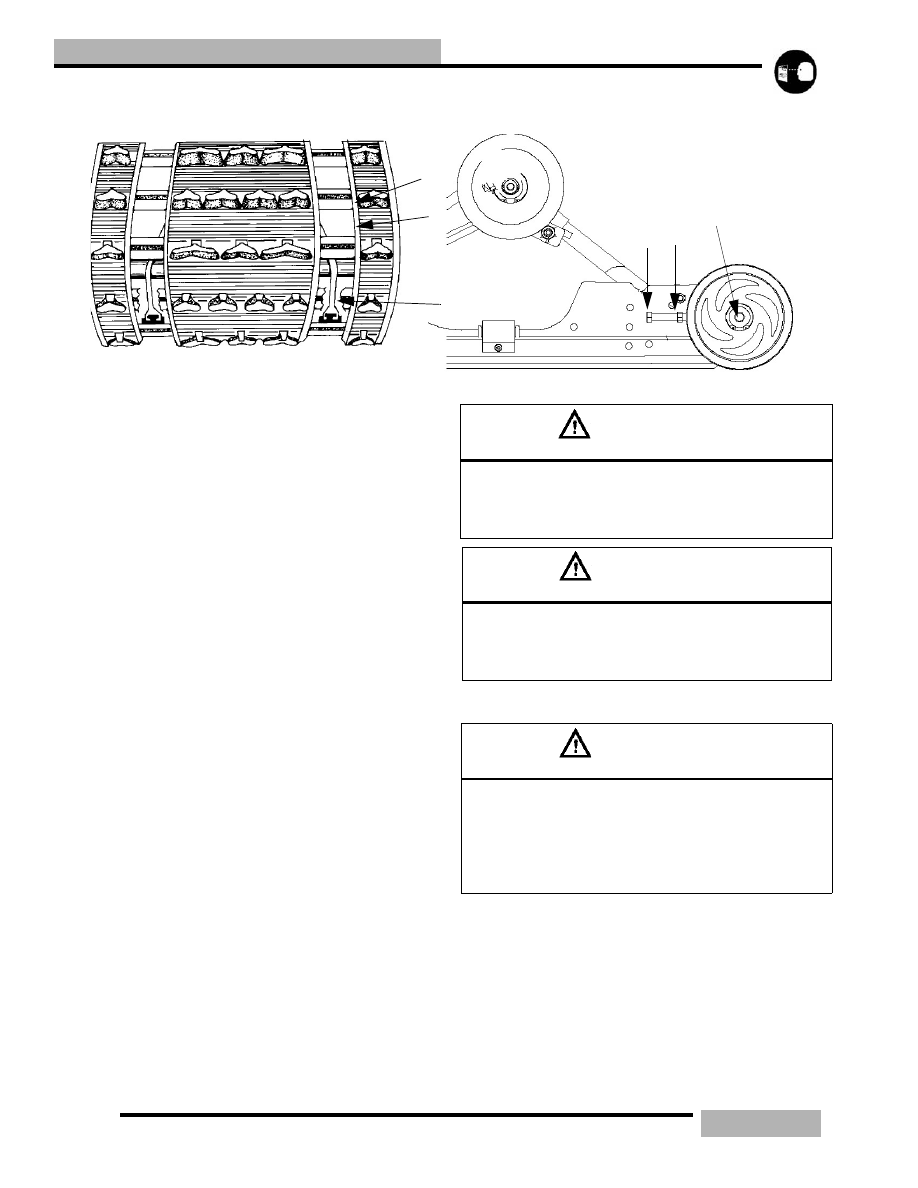Snowmobile Polaris (2006 year). Manual - part 21

3.20
MAINTENANCE
TRACK ALIGNMENT
NOTE: Track alignment affects track tension.
Misalignment of the track will cause excessive wear
to the track, rail slides, and rail.
NOTE: Excessive rail slide wear occurs due to
running in inadequate snow conditions.
Periodically check that the track is centered and running
evenly on the slide rails. Misalignment will cause excessive
wear to the track and slide rails.
1.
Safely lift and support the rear of the snowmobile off the
ground.
2.
Rotate the track by hand to check for any possible damage.
3.
Inspect the track rods (A) carefully and examine the track
along the entire length of each rod, bending the track edge
and inspecting it for breakage. If any rod damage is found,
the track should be replaced.
4.
Warm up the track by starting the engine and apply a small
amount of throttle so the track runs slowly at least five
complete revolutions.
5.
Stop the engine and turn the ignition off.
6.
Inspect track alignment by carefully looking through the
track window (B) to make sure the rails (C) are evenly
spaced on each side.
7.
Before any adjustments are made loosen up the rear idler
shaft (F).
8.
If the track runs to the left, loosen the left locknut and
tighten the left adjusting bolt (D). If the track runs to the
right, loosen the right locknut and tighten the right
adjusting bolt. It may be necessary to check this with the
engine rotating the track. Be sure to SHUT THE
MACNINE OFF before making any further adjustments.
9.
After any adjustments are complete, be sure to torque the
locknuts (E) to 35 ft-lb (48Nm).
10. Torque both idler shaft bolts (F) to 35 ft-lb (48Nm).
TRACK LUBRICATION
The slide rail needs snow for lubrication and cooling.
Excessive wear indicates insufficient lubrication. A new rail
slide can cause faster heat build-up in limited lubrication,
resulting in excessive wear.
NOTE: If excessive rail slide wear occurs due to
poor snow conditions additional wheel kits can be
added.
A
B
C
D
E
F
WARNING
Broken track rods can cause a rotating track to come off
the machine. Never operate or rotate a damaged track
under power with a broken rod. Serious injury or death
may occur.
WARNING
When performing the following checks and adjust-
ments, stay clear of all moving parts to avoid personal
injury. Never make any adjustments with the engine
running, as serious personal injury can result.
WARNING
Operating with insufficient lubrication between the rail
slide and track guide clips can cause track failure, loss
of vehicle control and loss of braking ability, which can
result in serious injury or death. Avoid operating vehicle
on ice and other surfaces that have little or no snow
conditions.